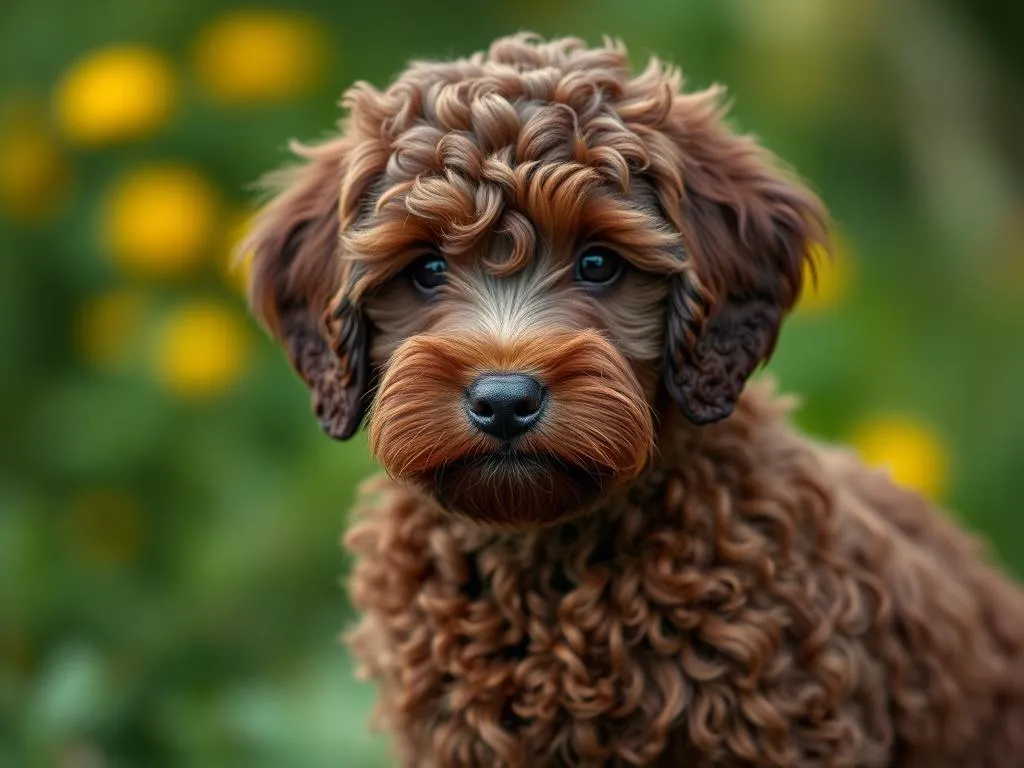
Training a Cockapoo can be a delightful journey, as these adorable mixed-breed dogs exhibit some of the best traits from their parent breeds: the Cocker Spaniel and the Poodle. Known for their friendly demeanor and playful nature, Cockapoos are not only affectionate companions but also eager learners. However, training them effectively requires an understanding of their unique characteristics and needs.
Understanding the Cockapoo
Breed Characteristics
Cockapoos are small to medium-sized dogs, typically weighing between 12 to 24 pounds. Their coat ranges from curly to wavy, often requiring regular grooming to prevent matting. One of the most appealing aspects of a Cockapoo is their temperament; they are generally friendly, sociable, and intelligent. This intelligence, combined with their high energy levels, makes them a joy to train but also presents certain challenges if not managed properly.
Common Behavioral Traits
Cockapoos are known for their playful and affectionate nature. They thrive on human interaction and can become very attached to their owners. However, this attachment can lead to challenges such as separation anxiety, which is common in the breed. Understanding these traits can help you tailor your training approach to suit their needs.
Preparing for Training
Essential Supplies
Before diving into training, gather essential training tools. Some must-haves include:
– Leash and collar: A comfortable collar and a sturdy leash are vital for outdoor training sessions.
– Treats: Use small, tasty treats to reward good behavior. Ensure they are healthy and suited for your Cockapoo’s dietary needs.
– Clicker: A clicker can be an effective tool for positive reinforcement, helping your dog associate the sound with rewards.
– Training books: Consider resources like “The Complete Guide to Cockapoo Training” for additional insights.
Setting Up the Training Environment
Creating a distraction-free environment is crucial for effective training. Choose a quiet space in your home or a calm outdoor area to begin training sessions. Consistency in the training environment helps your Cockapoo associate the space with learning and focus.
Understanding Basic Training Principles
Positive reinforcement is the cornerstone of effective dog training. Always reward your Cockapoo for good behavior instead of punishing them for mistakes. Patience and consistency are essential; every dog learns at their own pace, and it’s crucial to remain supportive throughout the process.
Basic Commands and Training Techniques
Teaching Sit
- Step 1: Start by holding a treat close to your Cockapoo’s nose to gain their attention.
- Step 2: Slowly move your hand upward, allowing their head to follow the treat, which will naturally cause their bottom to lower.
- Step 3: Once they are sitting, say “sit” and give them the treat.
- Common Mistakes: Avoid pushing your dog down into a sitting position, as this can create confusion and resistance.
Teaching Stay
- Step 1: Begin with your Cockapoo in a sitting position.
- Step 2: Open your palm in front of them and say “stay.”
- Step 3: Take a step back. If they stay, return to them and reward them with a treat.
- Increasing Duration: Gradually increase the time they stay before rewarding and add distance by stepping further away.
Teaching Come
Teaching your Cockapoo to come when called is vital for safety.
- Step 1: Begin in a safe, enclosed area. Use a cheerful tone and say “come” while gently pulling on the leash.
- Step 2: When they approach, reward them with praise and a treat.
- Step 3: Practice this in different environments to reinforce the command.
- Strategies: Use a long leash initially to give them some freedom while still maintaining control.
Teaching Leave It
This command helps prevent your Cockapoo from picking up harmful objects.
- Step 1: Hold a treat in both hands, showing one to your dog.
- Step 2: Close your hand around the treat when they try to take it and say “leave it.”
- Step 3: Once they stop trying to get the treat, reward them with the other treat.
- Practical Exercises: Gradually increase the difficulty by placing treats on the floor and instructing them to “leave it.”
Socialization
Importance of Socialization
Socialization is crucial for Cockapoos to develop into well-adjusted adults. Exposing them to various people, environments, and other animals during their early months can help prevent behavioral issues later on.
Socialization Techniques
- New Environments: Introduce your Cockapoo to different settings, such as parks and pet-friendly stores.
- People and Pets: Encourage interactions with various people and well-behaved dogs.
- Puppy Classes: Enroll in local puppy classes or playgroups, which can provide structured socialization opportunities.
Addressing Behavioral Issues
Common Behavioral Problems
Cockapoos can exhibit various unwanted behaviors, including barking, chewing, and digging. Understanding the root cause of these behaviors is essential for effective correction.
Solutions and Training Strategies
- Barking: Identify triggers for excessive barking, such as boredom or anxiety. Use commands and distractions to manage this behavior.
- Chewing: Provide appropriate chew toys and redirect chewing behavior away from furniture or shoes.
- Digging: Ensure your Cockapoo gets enough exercise and mental stimulation to minimize digging out of boredom.
If behavioral issues persist, consider seeking help from a professional dog trainer.
Advanced Training
Tricks and Agility
Once your Cockapoo has mastered the basics, teaching them fun tricks can enhance their training experience. Consider tricks like “roll over,” “shake,” or even agility training, which can provide both mental and physical stimulation.
Continuing Education
Training shouldn’t stop after the basics. Continuous education and training keep your Cockapoo engaged and help strengthen your bond. Explore advanced training techniques, agility classes, or even canine sports to keep their skills sharp.
The Role of Health in Training
Physical Health Considerations
A Cockapoo’s physical health plays a significant role in their training effectiveness. Ensure they receive a balanced diet and regular exercise to maintain their energy levels and overall well-being. Regular vet check-ups can help monitor their health and address any concerns that might impact their ability to train.
Mental Health and Training
Understanding your Cockapoo’s mental health is crucial. Anxiety and stress can hinder their ability to learn. Create a calm and focused training environment, and consider using calming aids if necessary. Regular playtime, mental stimulation, and plenty of love can help keep your Cockapoo relaxed and open to learning.
Conclusion
Training a Cockapoo is a rewarding experience that enriches the bond between you and your dog. By understanding their unique traits and employing effective training techniques, you can foster a well-behaved, happy companion. Remember to remain patient and consistent in your approach, as every dog learns at their own pace. Enjoy the journey of teaching your Cockapoo, and celebrate the milestones along the way.
FAQs
-
What is the best age to start training my Cockapoo?
Starting training as early as 8 weeks is ideal, but it’s never too late to train. -
How long should training sessions be?
Short sessions of 5-10 minutes are effective and help maintain your Cockapoo’s focus. -
Can Cockapoos be left alone?
While they can be left alone, it’s essential to gradually train them to avoid separation anxiety. -
What are the signs of separation anxiety?
Signs include excessive barking, destructive behavior, and attempts to escape when left alone.
By following these guidelines, you can successfully train your Cockapoo, leading to a well-mannered and happy companion for years to come.









